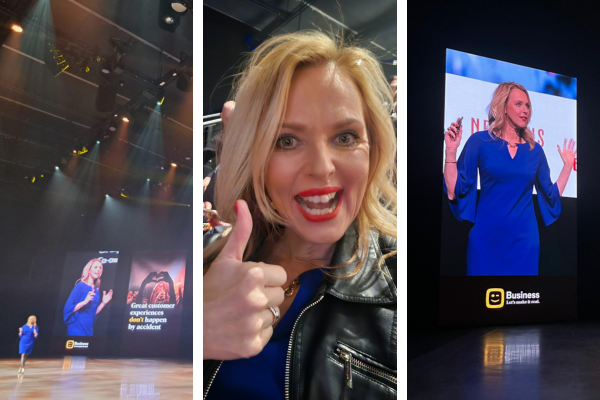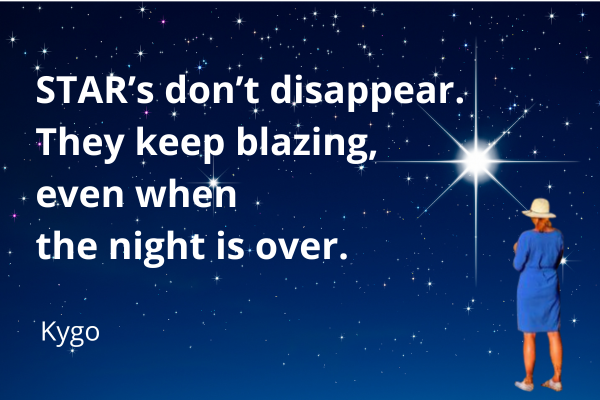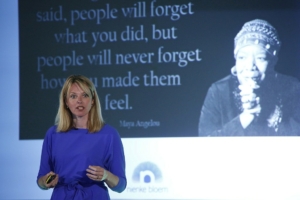In our bright orange retro Volkswagen T3 campervan - her name is Beatrix, after our former Dutch queen - there's always a roll of duct tape in the glove compartment. She's a classic. She's fun. And she's not without quirks.
When the mirror gives up, the fridge door flaps open, or some mysterious knob decides it's had enough ... out comes the duct tape. It sticks. It saves the day. It holds things together when nothing else does.
And honestly? That's exactly what your Customer Experience story should do.
It should stick like duct tape.

The frustration of being unheard
If you've ever walked out of a meeting wondering why nobody remembered what you said last week - or worse, felt like your carefully crafted CX strategy went in one ear and out the other - you're not alone.
I've worked with hundreds of CX leaders. Brilliant, experienced professionals with solid plans, good data, and a vision for customer-centric transformation. And yet ... their story just didn't land.
Why? Because it wasn't sticky enough.
What makes a story stick?
In episode 49 of my podcast, CX Leadership Talks, I dive into this exact problem. And more importantly, I share a solution you can apply right away: the SUCCES formula from the book Made to Stick by Chip and Dan Heath.
If you want your strategy to be remembered, repeated, and shared, this formula is gold.
Let's break it down:
- Simple - Strip your message down to its core. One idea. One line. No 43-slide decks.
- Unexpected - Surprise your audience. Break their pattern. Make them look up.
- Concrete - Use real stories, real names, real numbers. Help people see what you mean.
- Credible - Back up your message with data, examples, and support from leaders.
- Emotional - Move people. Use stories that touch the heart, not just the head.
- Stories - Bring your message to life. Because people remember stories, not spreadsheets.
If you want your CX story to drive change, you need more than logic. You need storytelling that sticks. That's where real transformation begins.
A sticky story starts with structure
In the podcast, I also explain how the SUCCES principles align perfectly with my CX Story Blueprint - the tool I use with leaders to build their own business change narrative.
Your CX story should include:
- A personal connection (why this matters to you and connects you with your audience)
- A sense of urgency (why now?).
- A clear strategy (what's your CX plan?).
- A call to action (what should people do?).
When you combine this structure with the SUCCES elements, something shifts. People don't just hear your message - they remember it, and they act on it.
Want to craft your own sticky CX story?
If this resonates and you're ready to take action, I'm inviting you to join one of my free CX Story Webinars. In just one hour, you'll apply the CX Story Blueprint and test your message against the SUCCES formula. You'll leave with a stronger, clearer story - ready to inspire and drive change.
Here are your options:
- Monday, March 25 - Dutch lunch edition
- Tuesday, March 26 - International (English)
- Wednesday, March 27 - Encore session
Your strategy deserves to be heard
Let me leave you with this: You don't need another slide deck. You need a story that people feel, remember, and share.
A story that sticks like duct tape in an orange camper van named Beatrix.
Tune into the podcast. Join the webinar. Let's make your CX story unforgettable.
Until next time, keep spicing up your Customer Experience leadership.
*****
Nienke Bloem is often called the Customer Experience speaker in the blue dress.
She's a global CX thought leader, educator and a global keynote speaker who inspires audiences with best practices and proven methodologies. She leads a speaking practice, a CX game company and a training business; she breathes Customer Experiences and is author of two CX books.
Her two-day Customer Experience Masterclass is known as the best program to prepare for your CCXP and she is the go-to person for CX leaders who want to advance their leadership and bring direct results from their Customer Experience transformation programs. Since 2020, she hosts a CX Leadership Masterminds program and helps leaders spice up their leadership and deliver an engaging CX Story including a solid CX Strategy. Besides, she is a modern-day pilgrim and found the parallel with leading customer centric transformations.
With her over 20 years of corporate experience, she speaks the business language. Her keynotes and education programs in Customer Experience are inspiring and hands-on. She is one of the few Recognized Training Partners of the CXPA and it is her mission to Make Customer Experience Work and help you deliver business results. Subscribe to her weekly CX Greetz to stay tuned.



